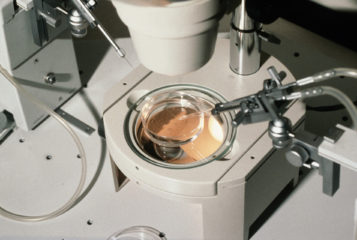The Human Fertility and Embryology Authority (HFEA) has updated its traffic light system for IVF treatment add-ons, to have five categories rather than three.
The updated treatment add-ons ratings system was created following concerns that fertility patients at private clinics are often offered, and charged for, optional extras whose benefits are not sufficiently supported by evidence. A review of thirteen add-ons by the HFEA found that none of them meet the criteria necessary to be classified as 'green' (which would means that there was clear evidence that they improve treatment outcomes).
Dr Tim Child, who chairs the Scientific and Clinical Advances Advisory Committee of the HFEA, said: 'For defined patient groups, there are particular treatment add-ons that may be potentially beneficial – but we know that for the vast majority of patients, more rounds of proven treatment could be more effective'.
Treatment add-ons may be offered during IVF treatments and include a range of interventions such as genetic tests, drugs and surgery.
The five categories in the updated guidance are:
- Green (+): it is effective at improving the treatment outcome.
- Yellow (±): it is not clear whether this add-on is effective at improving the treatment outcome (typically due to conflicting evidence in the scientific studies).
- Grey (?): it cannot be rated due to insufficient evidence.
- Black (0): it has no effect on treatment outcome.
- Red (!): it may reduce treatment effectiveness (potential safety concerns).
Add-ons may be offered for reasons besides increasing the chance of having a baby, including reducing the chance of having a miscarriage or reducing the risk of ovarian hyperstimulation syndrome. For this reason, some add-ons may have multiple ratings, for example, endometrial scratching.
Sarah Norcross, director of the Progress Education Trust (PET), the charity that publishes BioNews, said: 'Fertility treatment add-ons are an ongoing topic of controversy. They raise the question of whether it can ever be responsible – or fair – to ask patients to pay for procedures or tests whose use is not well-supported by scientific evidence. It remains to be seen how helpful patients and professionals find the HFEA's new ratings system for add-ons to be, but we at PET welcome the fact that the regulator is trying to find new ways to grapple with this challenging issue.'
Fertility clinics are required to give patients a clear idea of how likely it is that the use of add-ons will result in a live birth, and what the financial cost will be to the patient. Clinics must also link to the HFEA online ratings system. A consensus statement published alongside the new ratings system states that patients should be informed about the experimental nature of add-ons, and should not be charged for taking part in research (including clinical trials).
Sources and References
-
Clampdown on unproven fertility treatment add-ons
-
Fertility treatment 'add-ons' to be graded by watchdog to help patients avoid wasting their money
-
Regulator updates rating system to warn of unproven fertility treatments
-
Treatment add-ons with limited evidence
-
The responsible use of treatment add-ons in fertility services: a consensus statement






Leave a Reply
You must be logged in to post a comment.